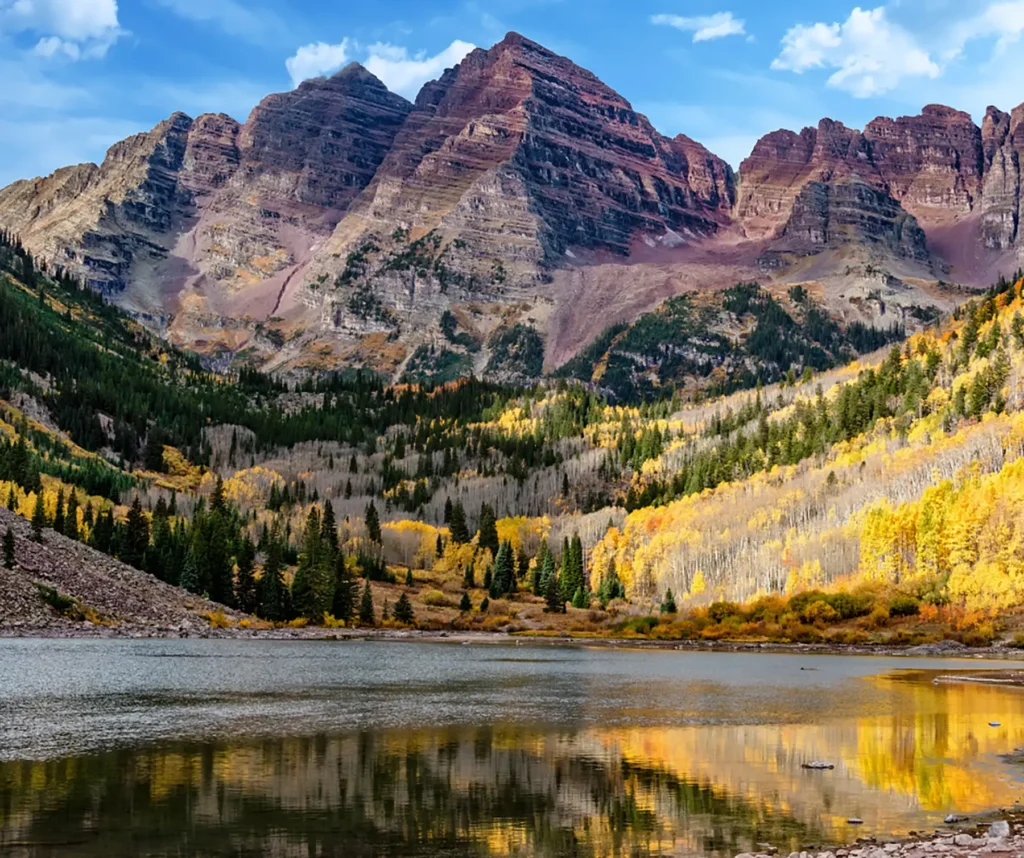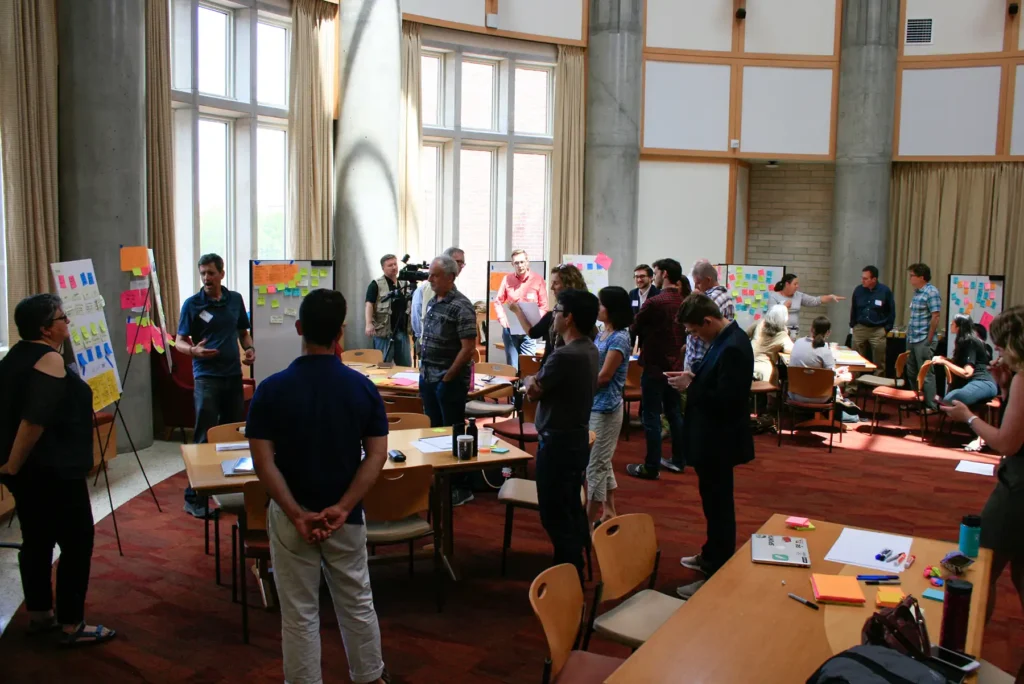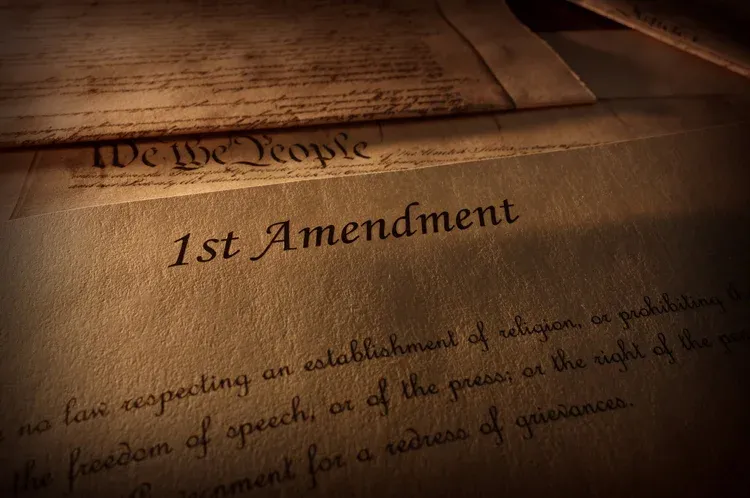By Melissa Milios Davis (Director, Colorado Media Project and
Martín Carcasson, Ph.D. (Founder/Director, Colorado State University Center for Public Deliberation)
NOTE: A slightly shorter version of this commentary was published in The Colorado Sun on Sunday, January 28, 2024.
The concept of the “public square” traces back to ancient Greek and Roman civilizations and colonial America, when local people established common areas not only to exchange ideas and debate, but also to greet neighbors and newcomers, host community celebrations, and even graze livestock.
Yet even before the Supreme Court declared the internet “the modern public square” in 2017, tech execs have tried to convince us that online forums — privately owned, commercial spaces that profit from outrage, division and clicks — are better suited for building community.
More recently, the term “public square” has been invoked by politically-backed online shopping ventures and social media moguls. And like so many previously unifying terms — liberty, democracy, patriotism — these words and concepts are now more often used to divide us.
This is why the dictionary definition of “public square” that we like best is also the simplest, most concrete, and grounded in place: “An open public area in a city or town where people gather.” Today we recognize the spirit of the public square also exists in other, less formal spaces where we meet neighbors face-to-face — including hair salons, libraries, schools, houses of worship, social clubs and community groups — outside the political sphere.
Against the headwinds of divisive national rhetoric, increasing polarization of local communities, digital overwhelm and social isolation — we believe it’s time for pragmatic, solutions-focused Coloradans to reclaim the public square from political pundits and conflict entrepreneurs. After the pandemic years kept us glued to our screens and sowed mistrust among our neighbors, this is not a luddite exhortation. As the new documentary “Join or Die: puts it, building “community connections could hold the answers to our democracy’s present crisis.”
What’s more, we believe that local newsrooms, libraries, schools, community and civic groups all have unique and important roles to play in helping local communities reimagine and rebuild Colorado’s public square — both online and in person. These local “bridging” institutions have a natural advantage in countering polarization and division. By intentionally creating spaces where diverse groups of local people can engage with one another as people — not as algorithm-curated voting blocs — genuine conversations about common challenges can spark empathy, understanding and solutions.
Last fall, more than 130 Colorado journalists, nonprofit leaders, community members, public policy staffers, philanthropic and business leaders gathered in Denver for the half-day 2023 Colorado Media Project Summit to reimagine the public square, asking: What does a healthy local news and information ecosystem look like? How might better conversations with neighbors help mend the fabric of our communities?
We’ll be the first to acknowledge that media itself can be an amplifier of discord and distrust. But despite compounded challenges facing Colorado communities, Summit participants articulated a clear-eyed vision for a future that they would like to help build, defined by these five indicators:
- Inclusive: Coloradans of all communities see themselves and their concerns reflected in local media; amid complexity, journalists strive to build understanding, empathy, and accountability.
- Trusted: Coloradans have strong media literacy, personally know the individuals who report the news their communities, and have ways to verify that the news they’re receiving is trustworthy.
- Relevant and accessible: Local people report in ways and on topics that are relevant to local communities, and present local news in formats that meet audiences where they are, online and in person.
- Adaptive: Local news leaders are clear-eyed about addressing headwinds, and have the skills and resources to adapt to a complex and rapidly changing market and information ecosystem.
- Sustainable: Diversified and stable revenue streams allow community newsrooms to attract and retain a high-quality workforce and volunteers, protect newsroom independence, and ensure reliable public service to all Coloradans.
“Sounds great,” you might say. “But how do we get there, from where we are today?”
A 2022 Gallup poll found that Americans’ trust in media is at a near record low, with only 34% reporting they have a “great deal” or a “fair amount” of confidence in national media. Contrast that, though, with a 2022 survey commissioned by Colorado Media Project that found 71% of Colorado residents say they are “very” or “somewhat” confident they can trust local news organizations to report the news fully, accurately, and fairly. And while nearly half of Americans say the news media deserves “a great deal” of blame for divisions, about the same portion of all Americans — including more than 60% of Republicans — say the media could also do “a great deal” to heal political divisions.
Colorado is the place to do it. Our state has been recognized nationally for its strong, collaborative local news ecosystem that centers community information needs. As just one example, last fall 13 Colorado newsrooms participated in a three-month program dedicated to “flipping” their elections coverage, to ensure that local questions and priorities drive local stories in 2024, instead of horse race rhetoric, inside baseball and clickbait. Momentum has been building, among Colorado’s newsrooms:
- Following the CMP Summit, a group of Colorado’s nonprofit and public-service news leaders convened at the University of Denver during the Denver Democracy Summit to discuss opportunities for joining forces to better serve all Coloradans — especially non-English speakers, low-income residents and those in rural areas — to ensure their priorities, stories and voices are reflected and included in local coverage.
- In December, Colorado’s public-service media leaders rolled up their sleeves for a full-day workshop hosted at the University of Colorado to start moving ideas into action.
- This week, CMP will announce a total of more than $380,000 in grants to 27 Colorado newsrooms, supporting their efforts to ensure that the voices and perspectives of all Coloradans are included in our state’s “public square”.
- And in early February, our growing coalition will post a public call for partners to join forces with Colorado’s 100-plus statewide and community newsrooms to reclaim and reimagine the public square, in partnership with local community groups and leaders who are dedicated to listening, hearing, and understanding our neighbors — and building bridges to a better future for all Coloradans.
2024 is an important year to intentionally cultivate understanding and respect with neighbors right here in Colorado, in our towns and schools — especially with those who may not think or look like you do. Tuning them out — or worse, dehumanizing them — won’t solve any of the common challenges that we face as a state, as a nation and as a planet. Despite the dominant narratives being pumped into our news feeds, national figures and candidate talking points don’t have to dominate local conversations, and this work doesn’t end in November.
Melissa Milios Davis is Director of the Colorado Media Project, a philanthropic initiative housed at Rose Community Foundation, and Vice President for Informed Communities at the Denver-based Gates Family Foundation. Martín Carcasson, Ph.D., is founder and director of the Colorado State University Center for Public Deliberation.



